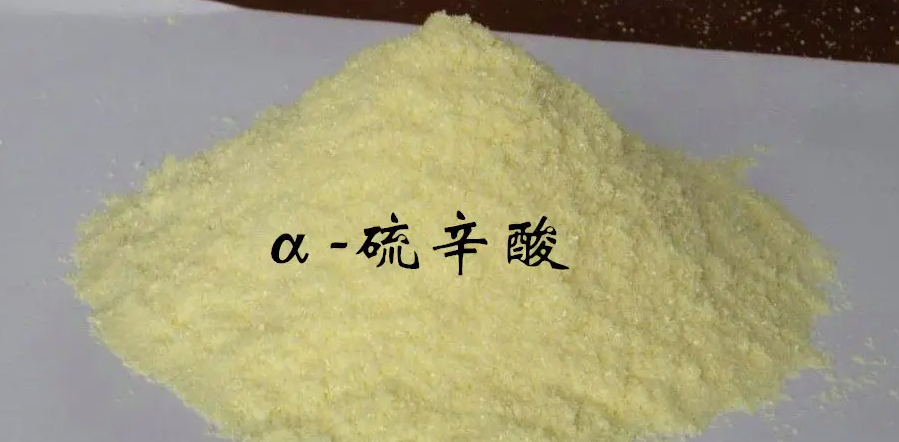Contact Us
For Product Pricing, Customization, Or Other Inquiries:
Contact Supplier
Call Us
Alpha-Lipoic Acid

History
In the 1930s, it was found that a certain potato growth factor was necessary for growth of some bacteria.3 In 1951, a fat-soluble coenzyme factor was discovered from lactic acid bacteria. Researchers isolated and identified ALA and found it to be an important growth factor for many bacteria and protozoa.4 It is the most active form of lipoic acid.
Chemistry
ALA is a naturally occurring dithiol compound that functions as a cofactor for many mitochondrial enzymes involved in energy metabolism. Endogenous ALA is bound to proteins and is involved in acyl-group transfer reactions. Both in vivo and in vitro studies demonstrate that ALA exhibits the ability to scavenge free radicals, chelate redox-active transition metals, regulate the detoxification of heavy metals, and modulate various signal transduction pathways in physiological and pathological conditions.
Uses and Pharmacology
The pharmacology of ALA has been studied in the chelation of transition and heavy metals, CNS conditions, oxidation, diabetes, AIDS, cancer, and liver ailments.
Alzheimer disease
Animal data
A number of animal studies have demonstrated that ALA improves age-associated cognitive dysfunction associated with neurodegenerative diseases. ALA improved cognitive function in healthy older mice, as well as longer-term memory of aged female nuclear magnetic resonance imaging mice. ALA also demonstrated improvement with cognitive function in senescence-accelerated mice and in chemically-induced, aging-accelerated mice. ALA improved hippocampal-dependent memory deficits of Tg2576 mice, a transgenic model of cerebral amyloidosis associated with Alzheimer disease. It also showed improvement of cognitive function in X-irradiation-induced memory impaired in mice.9
Clinical data
Small studies utilizing ALA in Alzheimer disease have been reported. Nine patients with Alzheimer-related dementias were given ALA 600 mg for an average of 337 days. The treatment led to stabilization of cognitive function as measured by the Mini-Mental State Examination and the Alzheimer Disease Assessment Scale, cognitive subscale (ADAS-cog).11 Though the study was small and not randomized, it suggests that treatment with ALA is a possible neuroprotective therapy option for Alzheimer disease and related dementias.
In a follow-up study, analysis was extended to 37 patients over an observation period of 49 months. The study confirmed that ALA treatment slowed the progression rate of dementia dramatically, compared with the rate in untreated patients or patients receiving cholinesterase inhibitors.
A small, 16-week, randomized, double-blind, placebo-controlled trial compared ALA 900 mg/day combined with vitamins C and E to coenzyme Q10 (CoQ10). Patients were randomized to one of the active treatments or matching placebo. The study’s primary outcome measures were changes from baseline in cerebrospinal fluid biochemical markers A-beta-42, tau, phosphorylated tau, and F2-isoprostane. The group receiving ALA/ vitamin C/vitamin E had a significantly greater reduction in F2-isoprostane, but no other biomarker results were significantly different. The group receiving ALA/vitamin C/vitamin E had a significantly greater decline in Mini-Mental State Examination (MMSE) scores compared with CoQ10 and placebo.47 A 12-month randomized, double-blind, placebo-controlled comparator trial (n = 39) in patients with probable mild Alzheimer disease (MMSE 15-26; Clinical Dementia Rating Scale 0.5-1) found no difference in F2-isoprostane levels in patients receiving combination therapy of ALA (600 mg/day) plus omega-3 fatty acids (docosahexamenoic acid [DHA] 675 mg/day, eicosapentaenoic acid [EPA] 975 mg/day), monotherapy with omega-3 fatty acids, or placebo (that contained 5% fish oil). However, over 12 months, the combination therapy significantly decreased cognitive and functional decline (MMSE and Instrumental Activities of Daily Living, respectively).






